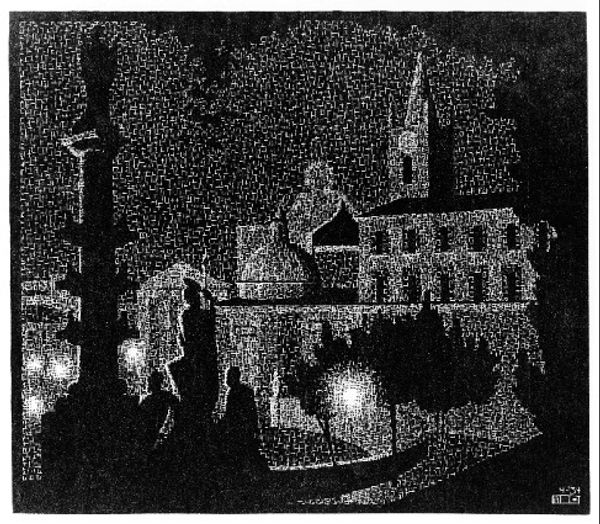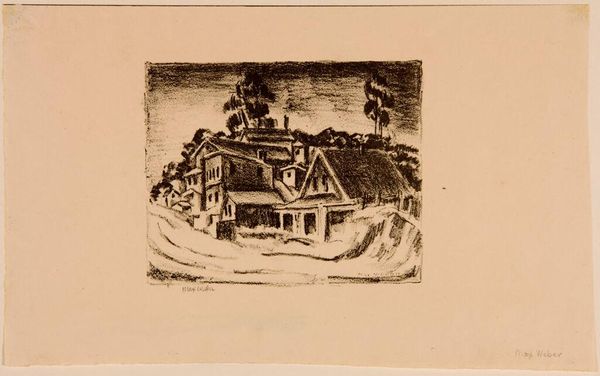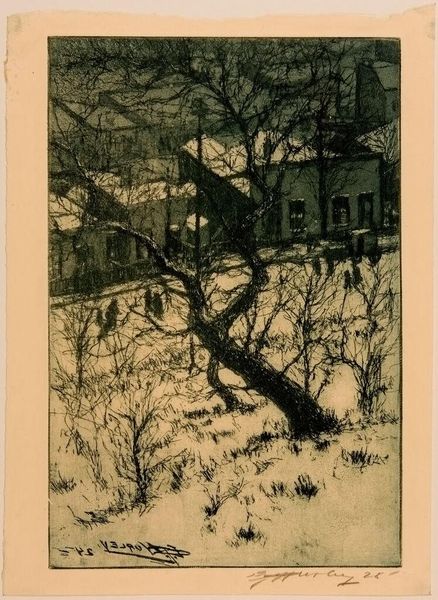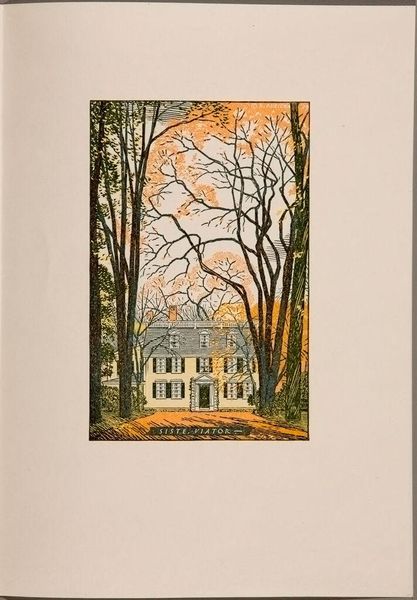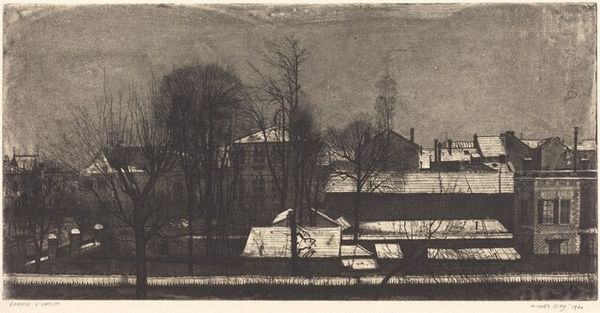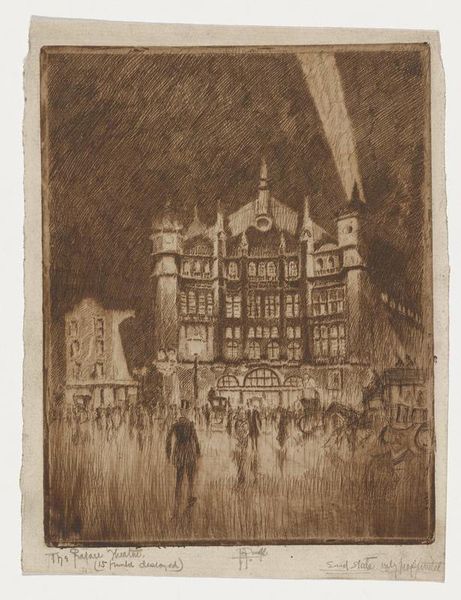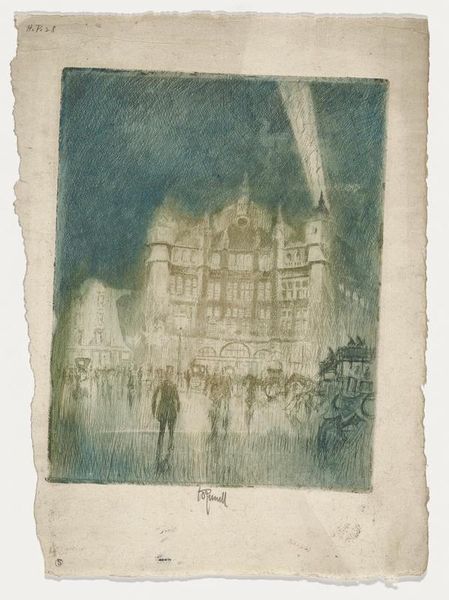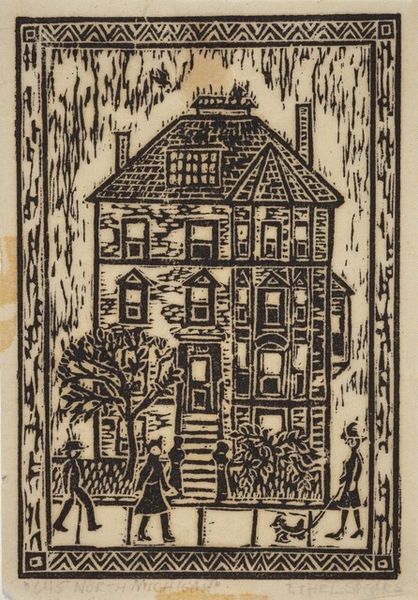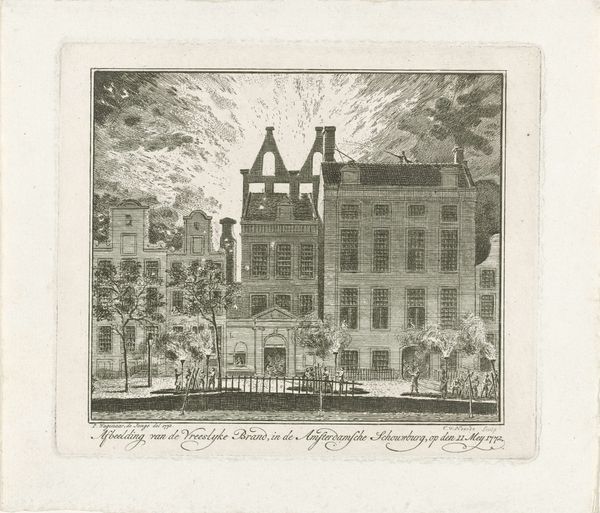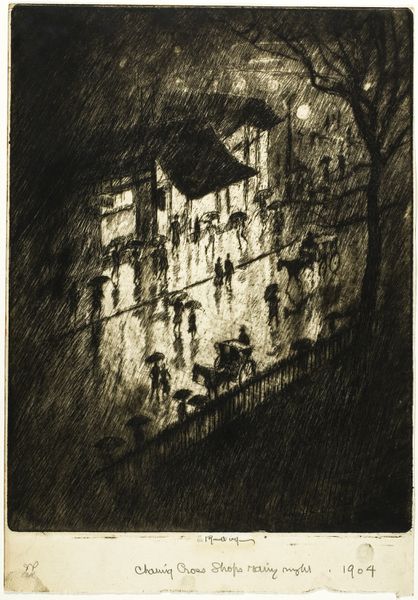
mixed-media, collage, assemblage, found-object, paper
#
mixed-media
#
collage
#
assemblage
#
found-object
#
paper
#
cityscape
#
surrealism
#
decorative art
#
watercolor
Copyright: Joseph Cornell,Fair Use
Curator: Here we have Joseph Cornell’s "Untitled (Pink Palace)," created around 1948. Cornell was a master of assemblage, creating these intricate worlds within boxes, often using found objects and collage. Editor: It's utterly dreamy, isn’t it? Like a faded postcard from a European spa town, but viewed through a cracked snow globe. There's a melancholy about it. Curator: Indeed. And that melancholic beauty, as you put it, feels quite deliberate. The composition relies on these sharp contrasts: the delicate pink of the palace against the deep blues and blacks that seem to swallow everything else around it. What kind of power dynamics are at play there, do you think? Editor: That's exactly what draws me in! It's a ghostly projection, not of power but maybe the residue of former empires—especially when you look at his simultaneous use of paper, collage, and mixed media to convey fragility alongside the solid edifice in the foreground. One reading could place this within discourses of nationhood in post-war America and even challenge the country’s burgeoning global dominance. Curator: The pink hue—such a striking choice for something described as a palace—evokes a romantic allure but, seen another way, could hint at artifice, performance and pretense. This certainly aligns with his surrealist inclinations, questioning reality and embracing the subconscious. How do you see it? Editor: For me, the "pink" destabilizes our usual assumptions about grand architecture. And the darkness surrounding the palace feels both protective and imprisoning, so those figures become quite vulnerable and subjected to this dark looming state. Thinking about women, class, and gender – which are mostly excluded from history and often only survive through visual documentation. Curator: So you're seeing it as potentially referencing social marginalization. I can see that. But he really doesn't allow us one solid meaning, does he? The mystery prevails. Editor: Which maybe helps it speak to so many readings, so many layers of interpretation. Cornell's boxes seem like quiet portals into whole universes. Curator: Well, the beauty of assemblage is its ability to compress time, memory, and material into one space. Something profound and lasting that challenges our everyday lives. Editor: Absolutely. It invites us to contemplate the narratives we build and the fragments that compose them, urging us to look deeper, maybe even a bit sideways, into the worlds around us.
Comments
No comments
Be the first to comment and join the conversation on the ultimate creative platform.
